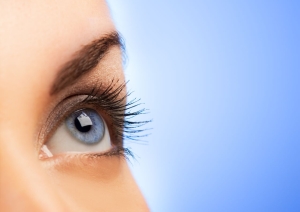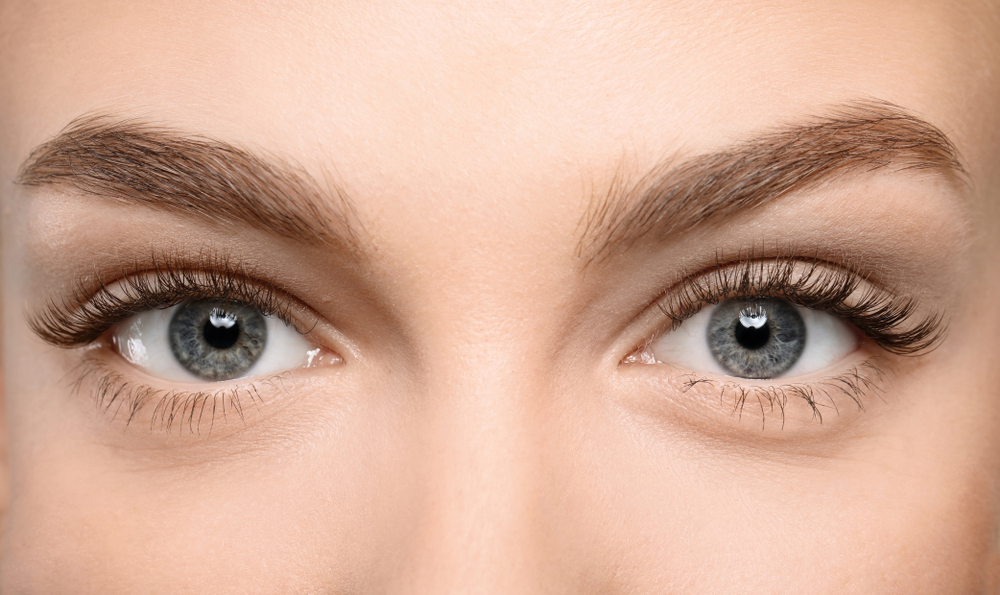You know the movie scene — the blond bombshell bats her long eyelashes at the man across the crowded room. He is helpless to resist her advances as those long eyelashes, seemingly the length of palm fronds, open and close to reveal her warm brown eyes.
Problem is — those long eyelashes of hers aren’t protecting her eyes as well as shorter lashes would.
At least that is the finding of Dr. David Hu and researchers from the Georgia Institute of Technology (GIT), who published a study in February in the Journal of the Royal Society Interface finding that eyelashes of a length around one-third the width of the eye are optimum for the greatest eye protection.
There have been many hypotheses about the role of eyelashes. Some have guessed they shade the eye from the sun. Others have thought they are the ultimate feather dusters, catching dust before it falls into the eye. But no one has ever really studied what eyelashes actually do.
That’s what Dr. Hu, an associate professor of mechanical engineering and biology at GIT, decided to do. The idea actually came to him, he said, after spending hours gazing at his newborn daughter’s face and eyes as she slept.
In lieu of making a couple dozen humans sit still while scientists studied their eyelashes, Hu and his team studied the eyelash lengths of 22 mammals including the red kangaroo, camel, African elephant, giraffe, zebra, and chimpanzees. They used animal pelts from the basement of the Museum of Natural History in New York City and carefully measured the eyelashes of each animal.
“We showed that they followed this pretty strict relationship; that is the lash is about one-third the width of the eye,” Hu explains.
Blowin’ in the Wind
 Hu’s team then built an artificial eye and tested it in a walking-speed wind tunnel. They tried various lengths of mesh eyelash on the eye and measured the changes in evaporation from the eye’s surface.
Hu’s team then built an artificial eye and tested it in a walking-speed wind tunnel. They tried various lengths of mesh eyelash on the eye and measured the changes in evaporation from the eye’s surface.
“The surprising thing that we found was that there was an optimum eyelash length, and that means that of all the eyelashes out there, that there’s a particular one that minimizes air flow on the eye surface,” Hu says.
There are two benefits to minimizing air flow onto the eye’s surface — it cuts down on evaporation and it reduces the amount of dust and other fine particles that enter the eye.
The study found that if eyelashes are shorter, they do little to inhibit the air moving over the eye’s surface and therefore don’t protect it. If they are too long, they actually funnel air down towards the eye, increasing the flow onto the eye. Eyelashes at the optimum one-third-width number create a zone of still air at the eye’s surface. That minimizes evaporation and dust entering the eye.
So, why do some people have longer lashes than others? Hu believes this could be a relationship with the shape of the face. Different faces route air in different ways over the eyes. The study hypothesizes that varying eyelash lengths correct for the varying face angles to create that zone of still air at the eye.
Eyelash length and thickness can also be a factor of environment, the study claims. Camels, for instance, have especially thick eyelashes. This is likely a response to the dusty environment they live in and the need for the lashes to keep dust from the eyes. Studies in human children with allergies have shown similar trends — those children have longer lashes, presumably to shield the eyes from the irritants floating about in the air.
So, next time you’re tempted to glue on a pair of long eyelashes or opt for that eyelash growing treatment, you may want to think twice. One third of the width of your eye — that’s the perfect length.







